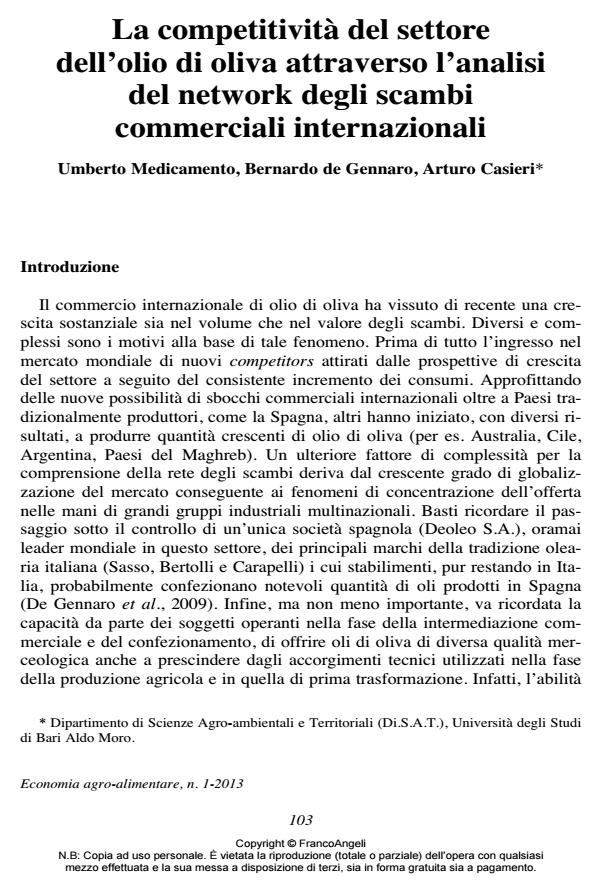La competitività del settore dell’olio di oliva attraverso l’analisi del network degli scambi commerciali internazionali
Titolo Rivista ECONOMIA AGRO-ALIMENTARE
Autori/Curatori Umberto Medicamento, Bernardo De Gennaro, Arturo Casieri
Anno di pubblicazione 2013 Fascicolo 2013/1
Lingua Italiano Numero pagine 20 P. 103-122 Dimensione file 151 KB
DOI 10.3280/ECAG2013-001005
Il DOI è il codice a barre della proprietà intellettuale: per saperne di più
clicca qui
Qui sotto puoi vedere in anteprima la prima pagina di questo articolo.
Se questo articolo ti interessa, lo puoi acquistare (e scaricare in formato pdf) seguendo le facili indicazioni per acquistare il download credit. Acquista Download Credits per scaricare questo Articolo in formato PDF

FrancoAngeli è membro della Publishers International Linking Association, Inc (PILA)associazione indipendente e non profit per facilitare (attraverso i servizi tecnologici implementati da CrossRef.org) l’accesso degli studiosi ai contenuti digitali nelle pubblicazioni professionali e scientifiche
This paper aims at showing the explanatory potential of network methods applied to the analysis of Country level competitiveness within specific productive sectors. More specifically, we focused on each Country’s position within the network of international commodity trade relationships, assuming that this influences its Country level competitive advantage. We based this statement on Ronald Burt’s theory of "structural holes" which, if existent within a network, grant to those agents occupying the holes the chance to manage a strategic resource which becomes a competitive advantage. In order to test this hypothesis we applied network analysis to the international virgin olive oil trade network, represented as a weighted, directed network (wdn).
Parole chiave:Olive oil, international trade network, structural hole
Jel codes:F13, F14
Umberto Medicamento, Bernardo De Gennaro, Arturo Casieri, La competitività del settore dell’olio di oliva attraverso l’analisi del network degli scambi commerciali internazionali in "ECONOMIA AGRO-ALIMENTARE" 1/2013, pp 103-122, DOI: 10.3280/ECAG2013-001005